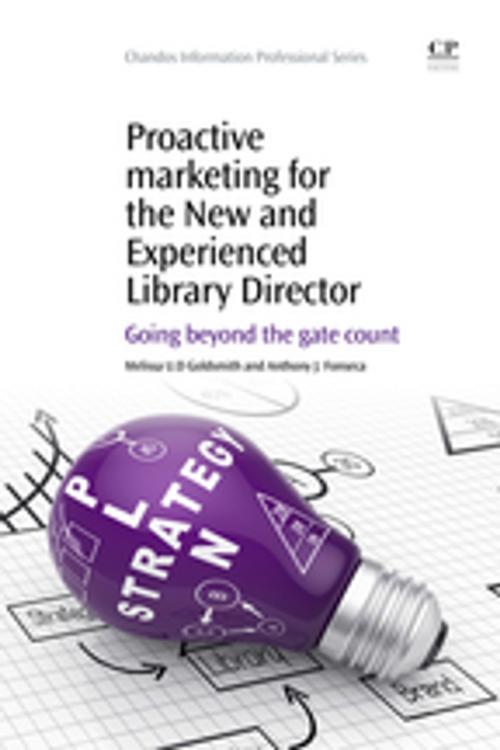Proactive Marketing for the New and Experienced Library Director
Going Beyond the Gate Count
Nonfiction, Reference & Language, Language Arts, Library & Information Services, Business & Finance, Marketing & Sales, Reference| Author: | Melissa U.D. Goldsmith, Anthony J. Fonseca | ISBN: | 9781780634685 |
| Publisher: | Elsevier Science | Publication: | August 26, 2014 |
| Imprint: | Chandos Publishing | Language: | English |
| Author: | Melissa U.D. Goldsmith, Anthony J. Fonseca |
| ISBN: | 9781780634685 |
| Publisher: | Elsevier Science |
| Publication: | August 26, 2014 |
| Imprint: | Chandos Publishing |
| Language: | English |
Academic libraries have continually looked for technological solutions to low circulation statistics, under-usage by students and faculty, and what is perceived as a crisis in relevance, seeing themselves in competition with Google and Wikipedia. Academic libraries, however, are as relevant as they have been historically, as their primary functions within their university missions have not changed, but merely evolved. Going beyond the Gate Count argues that the problem is not relevance, but marketing and articulation. This book offers theoretical reasoning and practical advice to directors on how to better market the function of the library within and beyond the home institution. The aim of this text is to help directors, and ultimately, their librarians and staff get students and faculty back into the library, as a result of better articulation of the library’s importance. The first chapter explores the promotion of academic libraries and their function as educational systems. The next two chapters focus on the importance of the role social media and virtual presence in the academic library, and engaging and encouraging students to use the library through a variety of methods, such as visually oriented special collections. Remaining chapters discuss collaboration and collegiality, formalized reporting and marketing.
- Offers clear, concise writing, with thoughtful discussions of the problems facing academic libraries
- Demonstrates comprehensive and thoughtful research that informs theoretical approaches to realistic outcomes that address these problems
- Provides helpful tables, illustrations, and photographs that evidence the collaborative nature of contemporary academic libraries
- Provides practical examples from actual experiences that can be adapted by readers
Academic libraries have continually looked for technological solutions to low circulation statistics, under-usage by students and faculty, and what is perceived as a crisis in relevance, seeing themselves in competition with Google and Wikipedia. Academic libraries, however, are as relevant as they have been historically, as their primary functions within their university missions have not changed, but merely evolved. Going beyond the Gate Count argues that the problem is not relevance, but marketing and articulation. This book offers theoretical reasoning and practical advice to directors on how to better market the function of the library within and beyond the home institution. The aim of this text is to help directors, and ultimately, their librarians and staff get students and faculty back into the library, as a result of better articulation of the library’s importance. The first chapter explores the promotion of academic libraries and their function as educational systems. The next two chapters focus on the importance of the role social media and virtual presence in the academic library, and engaging and encouraging students to use the library through a variety of methods, such as visually oriented special collections. Remaining chapters discuss collaboration and collegiality, formalized reporting and marketing.
- Offers clear, concise writing, with thoughtful discussions of the problems facing academic libraries
- Demonstrates comprehensive and thoughtful research that informs theoretical approaches to realistic outcomes that address these problems
- Provides helpful tables, illustrations, and photographs that evidence the collaborative nature of contemporary academic libraries
- Provides practical examples from actual experiences that can be adapted by readers















